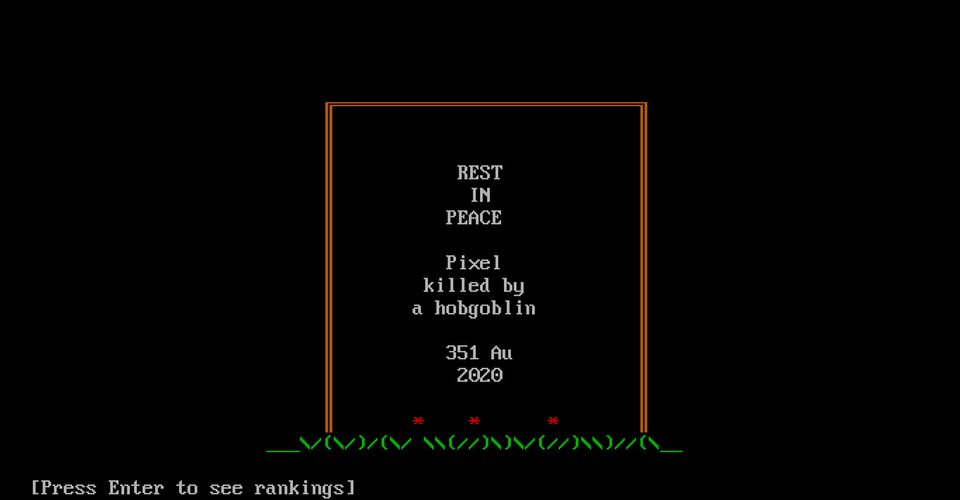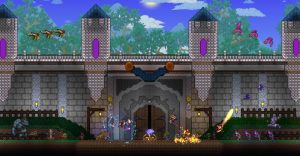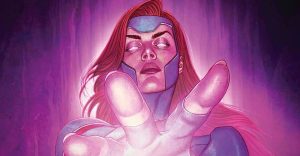History of the Roguelike, from Rogue to Hades

Whenever a bestselling RPG is released with procedurally generated terrain, exploration-focused gameplay, and permanent consequences for dying, game critics like to label them “Roguelike,” or derivative titles such as “Godlike” for Hades. But what is a Roguelike, exactly? The history of this RPG sub-genre is a fascinating one that stretches back in time to the early 1980s, where many video games were text-based and an “@” literally symbolized the player’s intrepid hero.
At the 2008 International Roguelike Development Conference, a group of designers came up with a definition for Roguelikes called the “Berlin Interpretation,” which listed these criteria, among others:
- Permanent Death, or “Permadeath“: if a Roguelike character dies during the course of the back, players have to start over and build a new character from scratch.
- Procedurally Generated Levels: Each new play-through of a Roguelike introduces a freshly crafted dungeon with multiple layers and a random spread of treasure, monsters, and dangers, forcing players to adapt on the fly in order to survive.
- Turn-based Gameplay: Each player action in a Roguelike takes up a single turn, during which every monster in the dungeon layer also makes its move.
- Player versus Environment: Roguelikes are combat/survival focused, with the player trying to overcome the computer-generated challenges rather than other players.
- Complexity: Players have a wide variety of commands and interactivity options in Roguelike games, letting them defeat monsters and bypass obstacles in multiple ways.
Most fantasy RPGs don’t qualify as Roguelikes under these criteria, but many games like Minecraft use similar procedural world generation and other elements of the Roguelike genre to keep players on their toes. A few games from the late 1970s and 1980s even pioneered key “Roguelike” mechanics years before the creation of Rogue, the dungeon-crawler that started it all.
The First Wave: Star Trek (1971), Beneath Apple Manor, & Rogue

In 1971, computer programmer Mike Mayfield created Star Trek, a simple exploration/strategy game where players controlled an Enterprise-style starship as it hunted Klingon Warbirds through randomized quadrants of space. In 1978, a game designer named Don Worth published a game called Beneath Apple Manor for the Apple II and Atari 8-bit home computers, a dungeon crawler where an adventurer explores a monster-filled dungeon to retrieve a golden apple. Both these games pioneered many of the gameplay mechanics and themes seen in later Roguelikes, but it was Rogue itself, created by programmers Michael Toy and Glenn Wichman, that wound up truly codifying this RPG sub-genre.
The premise and plot of Rogue, as detailed in Ars Technica, was simple and minimal, as was its graphics, represented using ASCII characters: in the game, a nameless “@” symbol adventurer explores a labyrinthine dungeon in search of the Amulet of Yendor, encountering sinister monsters represented by letters of the alphabet (“E” for Emu, “S” for Snake, etc.) After each permanent player death, the dungeon levels of Rogue are freshly randomized, as are the properties of items such as weapons, armor, potions, wands, staffs, and scrolls, forcing players to re-learn the game each time they start a new playthrough. The popularity of Rogue can arguably be traced to the novelty and freshness these new game cycles create, while its proliferation of spin-offs can be credited to Rogue’s open-source code and text-based visuals, encouraging programmers to focus on new gameplay over new graphics.
Early Roguelikes: Hack, Moria, Nethack, Angband, & More

As the source code behind Rogue started proliferating, different groups of programmers started tweaking, adding to, and reinventing the game for their own purposes, giving rise to the first “Roguelikes.” Two early spin-offs, Hack and Moria, were built from scratch by developers who enjoyed playing Rogue and wanted to recreate its gameplay for their own edification, adding their own unique touches in the process. Hack had improved monster AI, characters classes, shops, and the ability to eat corpses to gain their powers. Moria expanded the size, shape and depth of dungeon levels, introduced a final boss villain inspired by the Balrog from Lord Of the Rings, and let players mine ore, among other features.
These spin-offs themselves acquired spin-offs, with 1987’s NetHack introducing new classes, new enemies, and new ways to die, and 1990’s Angband expanding Moria‘s size and complexity while adding features like undead monsters modeled after characters who died in previous play-throughs. Other Roguelikes such as Omega and Ancient Domains Of Mystery added their own innovations – more advanced graphics, non-combat zones, actual storylines – while still maintaining their quintessential Roguelike flair.
The Rise of Roguelites: Diablo, Minecraft, Dark Souls, & More

Roguelikes have always been a bit niche, appealing to gamers willing to prioritize gameplay over graphics and laugh off the loss of their hard-built characters to a single stroke of bad luck. Even so, many AAA video game developers have borrowed features from the Roguelike sub-genre to add a touch of spontaneity and replay-ability to their titles, leading to a sub-sub-genre of RPGs referred to as “Roguelites.”
Blizzard Entertainment’s best-selling Diablo hack’n’slash RPG franchise features randomized loot and dungeon levels while simplifying the Roguelike formula with real-time combat, an intuitive interface, and a flavorful story about a war between the forces of Heaven and Hell. The death mechanics of Dark Souls and other “Soulslikes” threaten players with the permanent loss of accumulated experience, while Bloodborne’s Chalice Dungeons feature lets players create and share their own randomized labyrinths online. And then there’s Minecraft, released in 2011, which uses the procedural generation pioneered by Rogue to create entire “Voxel” worlds made of cubes, every inch of which can be mined and used to create spectacular structures.
New Roguelikes: Dwarf Fortress, FTL, Caves of Qud, & Hades

In the modern gaming industry, it’s considered unthinkable to release a game with crude ASCII graphics or a death mechanic that forces players to start over from the very beginning… and yet some of the most critically acclaimed indie games published in recent years are thoroughly steeped in the Roguelike aesthetic, appealing to both challenge-seekers and people happy to live on the edge between triumph and disaster. Dwarf Fortress, for instance, takes the procedurally generated worlds of traditional Roguelikes to their logical conclusion by simulating an entire fantasy world for its players. Each game world created during a Dwarf Fortress session has its own ecology, geography, a combat system where players can target individual body parts, and civilizations of dwarves with individualized, if often neurotic, personalities.
Caves of Qud, released in 2015, has a complex combat system and a world almost as intricate as Dwarf Fortress, albeit one with a post-apocalyptic science-fantasy feel and the ability to give player characters strange mutations. FTL: Faster Than Light is a sci-fi roguelike game set aboard a starship fleeing a galaxy conquering fleet, a game that hearkens back in some ways to the 1971 Star Trek proto-roguelike. Finally, the “Godlike” RPG Hades has shifting monster-filled labyrinths and a death mechanic which forces players to start over each time they die. Unlike most Roguelikes, Hades does let players upgrade their character and mix up their load-outs between runs, while also treating death not as a punishment, but as a respite players can use to interact with side characters and advance the story.
Source: Ars Technica
About The Author

















